8/11/2008 Diary Start
The Nikon D700 is kind of a Nikon D3 with full frame sensor in a Nikon D300 body (more expensive than the D300 and quite a bit less expensive than a D3).
Here are some critical features of these 3 cameras:
|
D3 |
D700 |
D300 |
Mega Pixels |
12MP |
12MP |
12MP |
Frame rate |
9fps |
5fps (8fps with extra battery pack) |
5fps (8fps with extra battery pack) |
Sensor Size |
FX (full frame) |
FX (full frame) |
DX (1.5x multiplier) |
Sensor cleaning |
No |
Yes |
Yes |
Ruggedness |
Very |
Good |
Good |
100% viewfinder |
Yes |
No |
No |
| Improved AF module |
Yes |
Yes |
No |
| Dual CF card slots |
Yes |
No |
No |
| |
|
|
|
In some way the D700 is closer to the D3 than the D300. We would be happy to use the D700 over the D3 and save some money. Other Pros handling very large lenses may decide differently. Why would you spend more money on the D700 over the D300? The simple answer: the full frame FX sensor.
What are the real benefits using a FX sensor?
- Lower noise because of larger pixels
- Making real use of top wide angle lenses like the AFS 14-24mm f/2.8
What are the downsides of FX sensors?
- The lenses have to be very good at FX in the corners
- The 1.5 multiplier is nice for tele shots
In our reviews in the past we never paid a lot of attention to ultra WA lenses. This changed since we got hooked on the Olympus 7-14mm (14-28mm equivalent). We plan to use this time the AFS 14-24mm f/2.8 quite a bit in our work. This lens is just wasted on a D300 because of the 1.5x multiplier.
We use the D700 with the Nikon top zooms: AFS 24-70mm f/2.8 and AFS 14-24mm f/2.8. We own ourselves the AFS 28-70mm f/2.8, AFS 17-35mm f/2.8 and AFS 70-200mm f/2.8 VR.
Los Gatos test shots
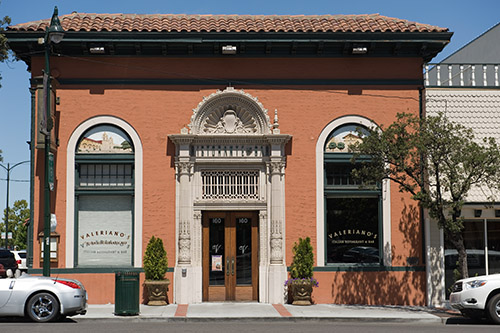
Ristorante @ISO 200
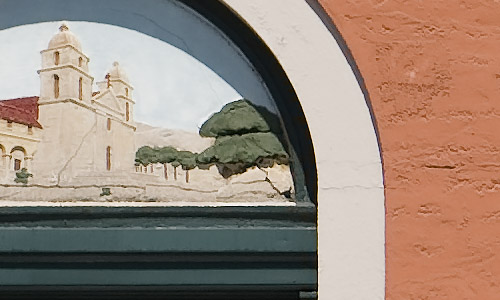
Crop @100% magnification
We think the image quality is as good as it gets. Lens and camera are just excellent.
You can download the original RAW from here (>13MB).
Note: Remember that the service we provide is financed
by selling our ebooks and PS
tools. Also direct donations are welcome.
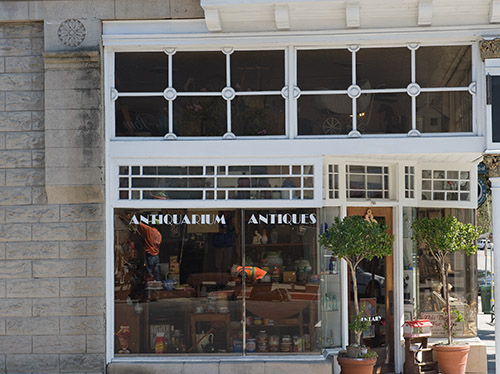
Antique store @ ISO 400
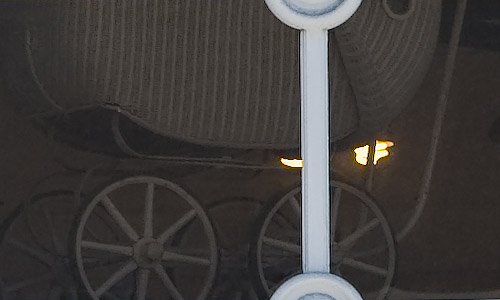
@ 100% magnification
Excellent shot for ISO 400 (hardly any noise at all).
ISO Test
Note: As expected the EasyD Detail Resolver pulls out a bit more noise but also shows more texture. Above ISO 3200 we would always use the Detail Resolver with care at very low levels.

Bear Coffee Shop
Nikon D700 |
| |
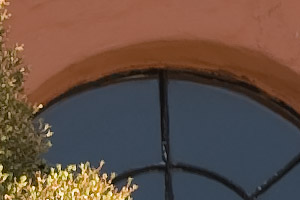
ISO
100 |
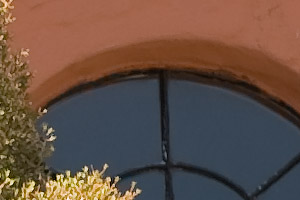 ISO
200 |
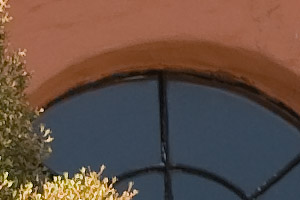
ISO 400 |
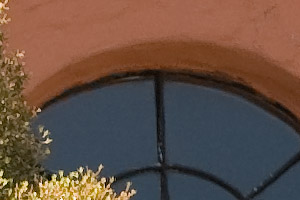
ISO 800 |
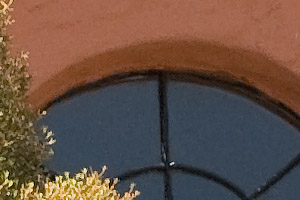
ISO 1600 |
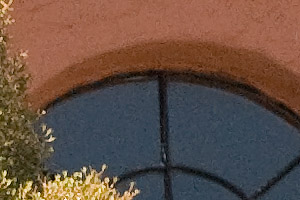
ISO 3200 |
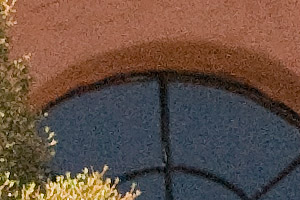
ISO 6400 |
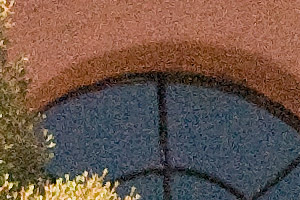
ISO 12800 |
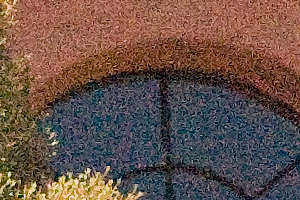
ISO 25600 |
All these shots are with luminance noise removal off in camera
(as much as the user can control this) and raw converter (color noise removal was at default). ISO 100 - 400 very smooth with virtually no noise.
ISO 800 also shows amazingly low noise. ISO 1600 shows still very manageable noise .
ISO 3200 can be still very useful. If needed ISO 6400 can save your day. From ISO 12800 on the noise is just too strong for our taste. To summarize: Don't be too afraid of ISO 1600.
Note: Because we use now also the DOP EasyD Detail Resolver (at moderate levels) noise actually is more visible.
With most cameras today we feel that ISO 100-400 defines our comfort zone. This means we use this range without any further thought. We have the feeling that with the D700 our comfort zone is easily IS0 200-800 (maybe even 1600). One f-stop more is very important to us because we shoot often freehand using our "High Speed Bracketing" technique.
Note about high ISO noise: Many people ask why they should worry about noise at ISO 800 or more if they only use 400 ISO at max. This is of course a good question. In the past we did not care either. Then we changed our photographic style and make now often use of Tonemapping (learn more about HDR and Tonemapping). During this process we brighten the shadows and this brings out the noise otherwise seen at way higher ISO. It often starts to matter at even ISO 200 photos.
Note about frame rate: We hardly photograph action and still we find the high frame rate very important. Why? We shoot high speed exposure brackets freehand. Please read this article for our motivation behind high speed brackets. We find that the Nikon D700 works for our new technique at 5fps very well (we know this from the D300).
First conclusions
- The Nikon D700 is a very solid and extremely responsive camera
- Image quality is excellent
- The D700 delivers at high ISO
- The LCD is very good (like with the D300)
- We would like to see a light top 70-200mm f/4 VR zoom from Nikon to keep the weight down
- We hope that Nikon implements larger EV steps than 1 EV for AEB (automatic exposure bracketing)
We think we are again at a good start. Now we will start using the D700 for real world photos.
Note: We know that some readers want more detail critique. We only critique things that are in our way to better photographs. Not much to critique here. More resolution is always nice, but 12MP is a lot and smaller pixels make it very hard to deliver such an excellent ISO performance (at least in 2008).
|